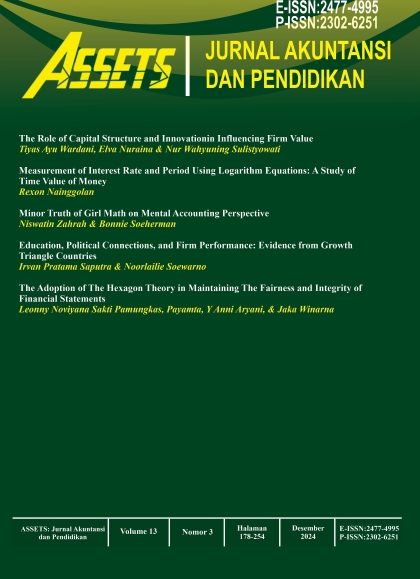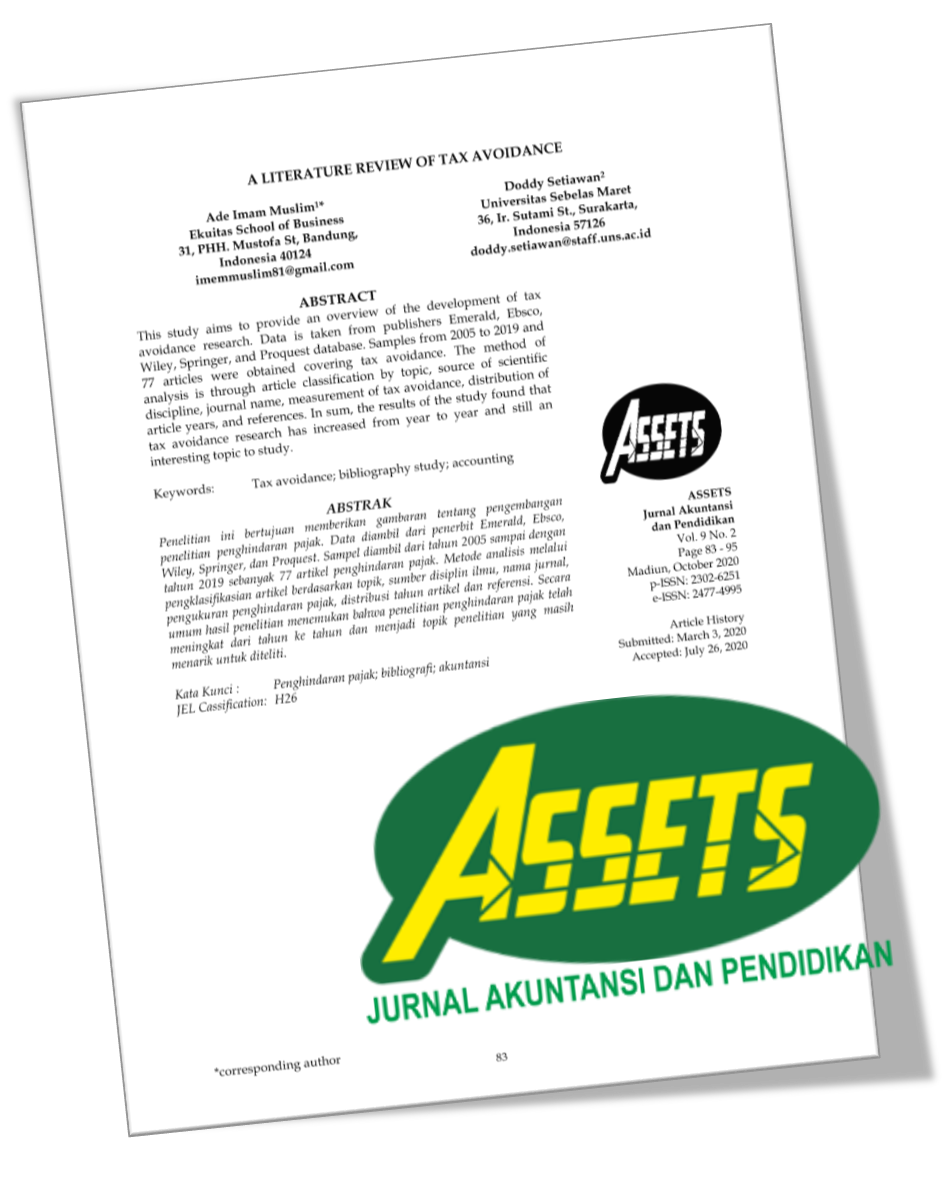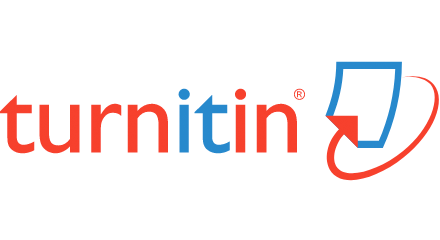MINOR TRUTH OF GIRL MATH ON MENTAL ACCOUNTING PERSPECTIVE
DOI:
https://doi.org/10.25273/jap.v13i3.20991Keywords:
Mental accounting, Impulsive buying behavior, Girl math, Decision making, Self control, Perilaku belanja impulsif, Pengambilan keputusan, Pengendalian diriAbstract
ABSTRACT
The "Girl Math" trend has become widespread and viral, seemingly supporting the idea that women tend to be impulsive when shopping. This research discusses the phenomenon in the context of mental accounting. This research aims to construct a conceptual model of girl math from the mental accounting perspective. This research uses the interpretivism paradigm to explore the meaning of the reality being studied through the triangulation of interview methods, observation, and information analysis through social media, the internet, and other relevant articles. This study found that almost all-girl math trends encourage impulsive buying behavior. They have a logic and mental accounting that differ from the general rational standards. Girl math has its own rationalization. The mindset of girls math occurs due to internal and external factors. Internal factors include emotions, the availability of economic resources, and self-control. External factors include community roles, product attraction, and media framing. Girl math could become another truth, but it is merely the truth of a minority.
ABSTRAK
Tren “Girl Math” menjadi marak dan viral dimana tren ini seolah mendukung anggapan bahwa perempuan cenderung impulsif dalam berbelanja. Penelitian ini membahas fenomena tersebut dalam konteks mental accounting. Penelitian ini bertujuan untuk mengkonstruk sebuah model konseptual girl math dalam perspektif mental accounting. Penelitian ini menggunakan paradigma interpretivisme untuk menggali makna dari realita yang diteliti melalui triangulasi metode wawancara, observasi, dan analisis informasi melalui media sosial, internet serta artikel lain yang relevan. Penelitian ini menemukan hampir seluruh tren girl math mendorong terjadinya impulsive buying behavior. Mereka memiliki logika dan mental accounting yang berbeda dengan standar rasional umum. Girl math memiliki rasionalisasinya sendiri. Mindset girl math terjadi akibat faktor internal dan eksternal. Faktor internal meliputi emosi, kesediaan sumber daya ekonomi, dan pengendalian diri. Sedangkan faktor eksternal terdiri atas peran komunitas, atraksi produk, dan framing media. Girl math bisa saja menjadi kebenaran yang lain, namun kebenaran sebatas kebenaran minoritas.
Downloads
References
Abdelsalam, S., Salim, N., Alias, R. A., & Husain, O. (2020). Understanding Online Impulse Buying Behavior in Social Commerce: A Systematic Literature Review. IEEE Access, 8, 89041–89058. https://doi.org/10.1109/ACCESS.2020.2993671.
Akram, U., Hui, P., & Khan, M. K. (2017). The plight of humanity: Online impulse shopping in China. Human Systems Management, 36(1), 73–90. https://doi.org/10.3233/HSM-171768.
Akram, U., Hui, P., Khan, M. K., Yan, C., & Akram, Z. (2018). Factors affecting online impulse buying: Evidence from Chinese social commerce environment. Sustainability (Switzerland), 10(2). https://doi.org/10.3390/su10020352.
Ali, M., & Amir, H. (2024). Understanding consumer herding behavior in online purchases and its implications for online retailers and marketers. Electronic Commerce Research and Applications, 64(March-April 2024).
https://doi.org/https://doi.org/10.1016/j.elerap.2024.101356.
Amalia, R., & Firmadhani, C. (2022). Teknik Pengambilan Keputusan (1st ed.). R7 Mediaprinting.
Aw, E. C. X., & Labrecque, L. I. (2020). Celebrity endorsement in social media contexts: understanding the role of parasocial interactions and the need to belong. Journal of Consumer Marketing, 37(7), 895–908. https://doi.org/10.1108/JCM-10-2019-3474.
Baumeister, R. F. (2022). Yielding to Temptation: Self-Control Failure, Impulsive Purchasing, and Consumer Behavior Get access Arrow. Journal of Consumer Research, 28(4), 670–676. https://doi.org/10.1086/338209.
Bellini, S., Cardinali, M. G., & Grandi, B. (2017). A structural equation model of impulse buying behaviour in grocery retailing. Journal of Retailing and Consumer Services, 36(May 2017), 164–171. https://doi.org/10.1016/j.jretconser.2017.02.001.
Beurer-Zuellig, B., & Seiler, R. (2017). Deal or no deal? Assessing the daily deal shopper. Proceedings of the Annual Hawaii International Conference on System Sciences, 2017-January, 4108–4117. https://doi.org/10.24251/hicss.2017.497.
Chang, Y. T., Yu, H., & Peng, L. H. (2015). Persuasive messages, popularity cohesion, and message diffusion in social media marketing. Journal of Business Research, 68(4), 777–782. https://doi.org/10.1016/j.jbusres.2014.11.027.
Chen, C. C., & You, J. Y. (2018). What drives impulse buying behaviors in a mobile auction? The perspective of the Stimulus-Organism-Response model. Telematics and Informatics, 35(5), 1249–1262. https://doi.org/10.1016/j.tele.2018.02.007 Get rights and content.
Chen, Y., Lu, Y., Wang, B., & Pan, Z. (2019). How do product recommendations affect impulse buying? An empirical study on WeChat social commerce. Information and Management, 56(2), 236–248. https://doi.org/10.1016/j.im.2018.09.002.
Christenson, G. A., Faber, R. J., de Zwaan, M., Raymond, N. C., Specker, S. M., Ekern, M. D., Mackenzie, T. B., Crosby, R. D., Crow, S. J., & Eckert, E. D. (1994). Compulsive buying: descriptive characteristics and psychiatric comorbidity. The Journal of Clinical Psychiatry, 55(1), 5–11. http://www.ncbi.nlm.nih.gov/pubmed/8294395.
Chung, N., Song, H. G., & Lee, H. (2017). Consumers’ impulsive buying behavior of restaurant products in social commerce. International Journal of Contemporary Hospitality Management, 29(2), 709–731. https://doi.org/10.1108/IJCHM-10-2015-0608.
Coley, A., & Burgess, B. (2003). Gender differences in cognitive and affective impulse buying. Journal of Fashion Marketing and Management, 7(3), 282–295. https://doi.org/10.1108/13612020310484834.
Das, S., Barve, A., Sahu, N. C., & Muduli, K. (2023). Enabling artificial intelligence for sustainable food grain supply chains: an agri 5.0 and circular economy perspective. Operations Management Research, 16(4), 2104–2124. https://doi.org/10.1007/s12063-023-00390-z.
Efendi, R., Indartono, S., & Sukidjo, S. (2019). The Mediation of Economic Literacy on the Effect of Self Control on Impulsive Buying Behaviour Moderated By Peers. International Journal of Economics and Financial Issues, 9(3), 98–104. https://doi.org/10.32479/ijefi.7738.
Ehsaei, P. (2023). Why The TikTok Trend ‘Girl Math’ Regresses Women To The 1970s. https://www.forbes.com/sites/pattieehsaei/2023/08/29/why-the-tiktok-trend-girl-math-regresses-women-to-the-1970s/?sh=5f2089047c62.
Feng, Z., Al Mamun, A., Masukujjaman, M., Wu, M., & Yang, Q. (2024). Impulse buying behavior during livestreaming: Moderating effects of scarcity persuasion and price perception. Heliyon, 10(7), e28347. https://doi.org/10.1016/j.heliyon.2024.e28347.
Downloads
Published
Issue
Section
License
Copyright (c) 2025 Assets: Jurnal Akuntansi dan Pendidikan

This work is licensed under a Creative Commons Attribution-ShareAlike 4.0 International License.
Perjanjian Lisensi dan Hak Cipta
Saat mengirimkan naskah ke jurnal, penulis menyatakan bahwa:
- Mereka diberi wewenang oleh rekan penulisnya untuk masuk ke dalam perjanjian ini.
- Karya yang dimaksud belum pernah diterbitkan secara resmi sebelumnya, kecuali dalam bentuk abstrak atau sebagai bagian dari kuliah, resensi, tesis, atau overlay jurnal yang diterbitkan.
- Karya yang dimaksud tidak sedang dipertimbangkan untuk diterbitkan di tempat lain,
- Publikasi karya yang dimaksud telah disetujui oleh semua penulis dan oleh otoritas yang bertanggung jawab - secara tahu sama tahu atau eksplisit - dari lembaga tempat pekerjaan itu dilakukan.
- Mereka mengamankan hak untuk mereproduksi materi apa pun yang telah diterbitkan atau dilindungi hak cipta di tempat lain.
- Mereka menyetujui lisensi dan perjanjian hak cipta berikut.
Hak Cipta
Penulis yang menerbitkan dengan ASSETS: Jurnal Akuntansi dan Pendidikan menyetujui persyaratan berikut:
- Penulis mempertahankan hak cipta dan memberikan jurnal hak publikasi pertama dengan karya yang secara bersamaan dilisensikan di bawah Lisensi Atribusi Creative Commons (CC BY-SA 4.0) yang memungkinkan orang lain untuk berbagi karya dengan pengakuan kepenulisan karya dan publikasi awal di jurnal ini.
- Penulis dapat masuk ke dalam pengaturan kontrak tambahan yang terpisah untuk distribusi non-eksklusif dari versi jurnal yang diterbitkan dari karya tersebut (misalnya, mempostingnya ke repositori institusional atau menerbitkannya dalam sebuah buku), dengan pengakuan publikasi awalnya di jurnal ini.
- Penulis diizinkan dan didorong untuk memposting karya mereka secara daring (misalnya di repositori institusional atau di situs web mereka) sebelum dan selama proses pengiriman, karena dapat menghasilkan pertukaran yang produktif, serta kutipan lebih awal dan lebih besar dari karya yang diterbitkan.
License and Copyright Agreement
In submitting the manuscript to the journal, the authors certify that:
- Their co-authors authorize them to enter into these arrangements.
- The work described has not been formally published before, except as an abstract or part of a published lecture, review, thesis, or overlay journal.
- That it is not under consideration for publication elsewhere,
- That its publication has been approved by all the author(s) and by the responsible authorities – tacitly or explicitly – of the institutes where the work has been carried out.
- They secure the right to reproduce any material already published or copyrighted elsewhere.
- They agree to the following license and copyright agreement.
Copyright
Authors who publish with ASSETS: Jurnal Akuntansi dan Pendidikan agree to the following terms:
- Authors retain copyright and grant the journal right of first publication with the work simultaneously licensed under a Creative Commons Attribution License (CC BY-SA 4.0) that allows others to share the work with an acknowledgment of the work's authorship and initial publication in this journal.
- Authors can enter into separate, additional contractual arrangements for the non-exclusive distribution of the journal's published version of the work (e.g., post it to an institutional repository or publish it in a book), with an acknowledgment of its initial publication in this journal.
- Authors are permitted and encouraged to post their work online (e.g., in institutional repositories or on their website) before and during submission, as it can lead to productive exchanges and earlier and more extraordinary citations of published work.

ASSETS: Jurnal Akuntansi dan Pendidikan is licensed under a Creative Commons Attribution-ShareAlike 4.0 International License.










